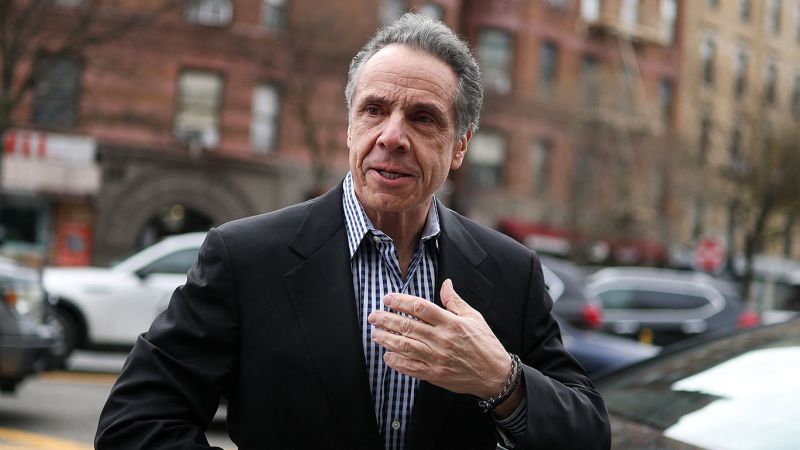In the tumultuous political landscape of New York City, Andrew Cuomo is positioning himself for a formidable comeback following his controversial resignation as Governor in August 2021. The path to his resurgence appears less obstructed than one might have imagined, with a beleaguered incumbent mayor, Eric Adams, and a fractious left wing creating what many perceive as an environment ripe for his return. Cuomo is now setting his sights on the mayoral office, presenting himself as the candidate capable of steering the city through its current turmoil, even going so far as to temporarily move into his daughter’s apartment to comply with residency requirements.
Cuomo’s political narrative unfolds like a soap opera, characterized by dramatic twists and turns that have become emblematic of New York’s politics. As his campaign evolves, it reflects a proactive re-entry into the public sphere, albeit cautiously, with carefully orchestrated appearances designed to minimize backlash. Reports suggest that in his private sphere, however, Cuomo is navigating a whirlwind of pressures, from ongoing investigations linked to allegations of misconduct to strategies aimed at derailing his opponents. Despite the scandals that initially forced his resignation, he appears undeterred, focusing on projecting a sense of inevitability that encourages potential allies to align with him.
As critical primary dates approach, Cuomo’s messaging has revolved around the notion of past governance — ironically, a view not commonly shared by other politicians of his era or by those who served alongside him. Amid accusations of sexual misconduct and mismanagement of the COVID-19 crisis—particularly as it pertains to nursing home fatalities—he remains largely unconcerned with public sentiment regarding these issues. Focus groups indicate that for many voters, these controversies have faded into the background, overshadowed by immediate urban challenges and frustrations.
While Cuomo seldom speaks of personal redemption, he has fostered a narrative suggesting a critique of the larger Democratic framework, lamenting the current state of affairs. He positions himself as a pragmatic leader capable of navigating the city’s crises, including homelessness and public safety, issues many residents feel acutely aware of. As he stated at a recent rally, New York City is facing significant troubles, encompassing rising costs of living and perceptions of crime, creating an atmosphere of anxiety and frustration among its populace.
Support from influential figures within the Democratic Party, such as Representative Greg Meeks, reinforces Cuomo’s status as a serious contender, emphasizing his past accomplishments as governor. Meeks and others argue that Cuomo’s track record demonstrates his ability to forge ahead on critical issues like job creation and affordable housing. The visible division within the Democratic landscape, coupled with fears of an ineffective organizational response to Cuomo, leaves room for his potential resurgence.
However, the lack of cohesive strategies from other candidates seeking to supplant Cuomo as the next mayor is palpable. Progressive leaders, including Alexandria Ocasio-Cortez, have expressed frustration over the disparate responses to Cuomo’s campaign, signaling a disconnect among party members. While anti-Cuomo sentiments are prevalent, there remains a conspicuous absence of a united front to challenge his candidacy effectively.
In a rapidly evolving political scenario marked by complexities surrounding fundraising and coalition-building, the left wing of the Democratic Party is grappling with how to harness support amidst the chaos. Recently, some candidates have attempted to rally behind various endorsements, and discussions about the future of the party’s structure are emerging as major players dive into the race.
As for Cuomo, his approach includes appealing to issues that resonate with voters, where he can reclaim his narrative as a competent, hands-on leader amid chaos. At public events, he stands as a figure of authority among union members and grassroots organizations, leveraging support from those historically aligned with his vision. Nevertheless, as the primary debate looms, there are growing concerns regarding his preparedness; this pivotal forum will mark his return to competitive politics after nearly two decades, and how he navigates this event is expected to significantly impact his campaign trajectory.
Overall, Andrew Cuomo’s attempt at a political resurrection reflects the underlying tensions within New York City’s government and its progressive factions, raising essential questions about leadership, accountability, and the future direction of one of America’s most dynamic cities. The culmination of these events will not only shape New York City’s immediate leadership context but could also resonate with broader Democratic strategies across the nation, especially as the party grapples with its identity and vision moving forward.



